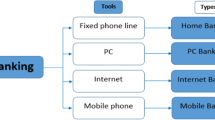Abstract
Maintaining customer–company relationship is very important from the perspective of business. It helps to gain new customers as well as retain existing customers, even the dissatisfied ones, through SIoT based informal and humble counseling. Full form of SIoT is social internet of things where smart objects communicate via social networks to extract required information and propagate suitable ones to identify potential customers and counsel them online. These objects are equipped with machine intelligence so that they can make friends in social networks, collaborate with each other to achieve a common goal, update relationship status and level of trustworthiness between them. Using social network connectivity different groups can be created, where satisfied and brand sincere customers can support company-engaged smart objects to convince or persuade prospective buyers. Convincing also includes the provision of humble and honest apologizing for poor quality customer service which the concerned person might have experienced earlier from company of the object. This may be difficult for a human being because of his underlying nature or characteristics like ego, anger etc. but becomes extremely easy for smart objects because they are devoid of human emotions and enabled by machine intelligence only. Research has proved that behavioral optimization techniques are capable of significantly improving a company’s sales record. Therefore, we can emphatically say that SIoT can be of great help to increase sales of a company. In this article, we propose: a complete model of communication for SIoT-CRM, design the company object as a finite automaton, mathematical models of persuasion with and without support of brand sincere customers.



Similar content being viewed by others
Change history
30 May 2022
This article has been retracted. Please see the Retraction Notice for more detail: https://doi.org/10.1007/s12652-022-03986-8
References
Ahmad A, Paul A, Rathore MM, Chang H (2016) Smart cyber society: Integration of capillary devices with high usability based on cyber–physical system. Future Gener Comput Syst 56:493–503
Anshari M, Almunawar MN, Lim SA, Al-Mudimigh A (2019) Customer relationship management and big data enabled: personalization & customization of services. Appl Comput Inform 15(2):94–101
Azeem S, Nasir N, Kousar S, Sabir S (2020) Impact of e-commerce investment and enterprise performance based on customer relationship management. Int J Psychosoc Rehabil 24(09):3998–4006
Cao Y, Gruca TS (2005) Reducing adverse selection through customer relationship management. J Mark 69(4):219–229
Darwish A, Hassanien AE (2018) Cyber physical systems design, methodology, and integration: the current status and future outlook. J Ambient Intell Humaniz Comput 9(5):1541–1556
Dawood RMS, Pillai G, Al-Greer M (2018) Fuzzy logic based scheme for directional earth fault detection and classification. In: International universities power engineering conference (UPEC), pp 1–6
De Souza RW, De Oliveira JVC, Passos LA, Ding W, Papa JP, Albuquerque V (2019) A novel approach for optimum-path forest classification using fuzzy logic. IEEE Trans Fuzzy Syst. https://doi.org/10.1109/TFUZZ.2019.2949771
Deb SK, Jain R, Deb V (2018) Artificial intelligence—creating automated insights for customer relationship management. In: International conference on cloud computing, data science & engineering (confluence), pp 758–764
Guzman AL, Lewis SC (2020) Artificial intelligence and communication: a human-machine communication research agenda. New Media Soc 22(1):70–86
Jiang JR (2018) An improved cyber-physical systems architecture for Industry 4.0 smart factories. Adv Mech Eng 10(6):1–15
Kulkarni T, Mokadam P, Bhat J, Devadkar K (2019) Potential customer classification in customer relationship management using fuzzy logic. In: International conference on innovative data communication technologies and application, pp 67–75
Maryani I, Riana D (2017) Clustering and profiling of customers using RFM for customer relationship management recommendations. In: International conference on cyber and IT service management (CITSM), pp 1–6
Mikusz M (2015) Towards a conceptual framework for cyber-physical systems from the service-dominant logic perspective. In: Twenty-first Americas conference on information systems, pp 1–13
Pawar RG (2016) Data mining: techniques for enhancing customer relationship management in fast moving consumer goods Industries. Int Res J Multidiscip Stud 2(2):1–5
Sagar S Lundberg L, Skold L, Sidorova J (2017) Trajectory segmentation for a recommendation module of a customer relationship management system. In: IEEE international conference on internet of things (iThings) and IEEE green computing and communications (GreenCom) and IEEE cyber, physical and social computing (CPSCom) and IEEE smart data (SmartData), pp 1150–1155
Soltani Z, Navimipour NJ (2016) Customer relationship management mechanisms: a systematic review of the state of the art literature and recommendations for future research. Comput Hum Behav 61:667–688
Stephen WY, Cheng KL, Choy HY (2016) An intelligent cloud-based customer relationship management system to determine flexible pricing for customer retention. In: Portland international conference on management of engineering and technology (PICMET), pp 633–641
Tao F, Qi Q, Wang L, Nee AYC (2019) Digital twins and cyber–physical systems toward smart manufacturing and industry 4.0: correlation and comparison. Engineering 5(4):653–661
Yen NY, Chen CC, Hu JJ (2018) Investigating the customer’s intention in the “Clicks-and-Mortar” business model. J Ambient Intell Human Comput. https://doi.org/10.1007/s12652-018-0929-6
Yerpude S, Singhal TK (2018) Internet of things based customer relationship management–a research perspective. Int J Eng Technol 7(2.7):444–450
Yin H, Zhou W, Li M, Ma C, Zhao C (2016) An adaptive fuzzy logic-based energy management strategy on battery/ultracapacitor hybrid electric vehicles. IEEE Trans Transp Electrif 2(3):300–311
Author information
Authors and Affiliations
Corresponding author
Additional information
Publisher's Note
Springer Nature remains neutral with regard to jurisdictional claims in published maps and institutional affiliations.
This article has been retracted. Please see the retraction notice for more detail: https://doi.org/10.1007/s12652-022-03986-8
About this article
Cite this article
Banerjee, A., Roychoudhury, B. & Gogoi, B.J. RETRACTED ARTICLE: A cyber physical system for managing customer relations. J Ambient Intell Human Comput 12, 8497–8506 (2021). https://doi.org/10.1007/s12652-020-02583-x
Received:
Accepted:
Published:
Issue Date:
DOI: https://doi.org/10.1007/s12652-020-02583-x




